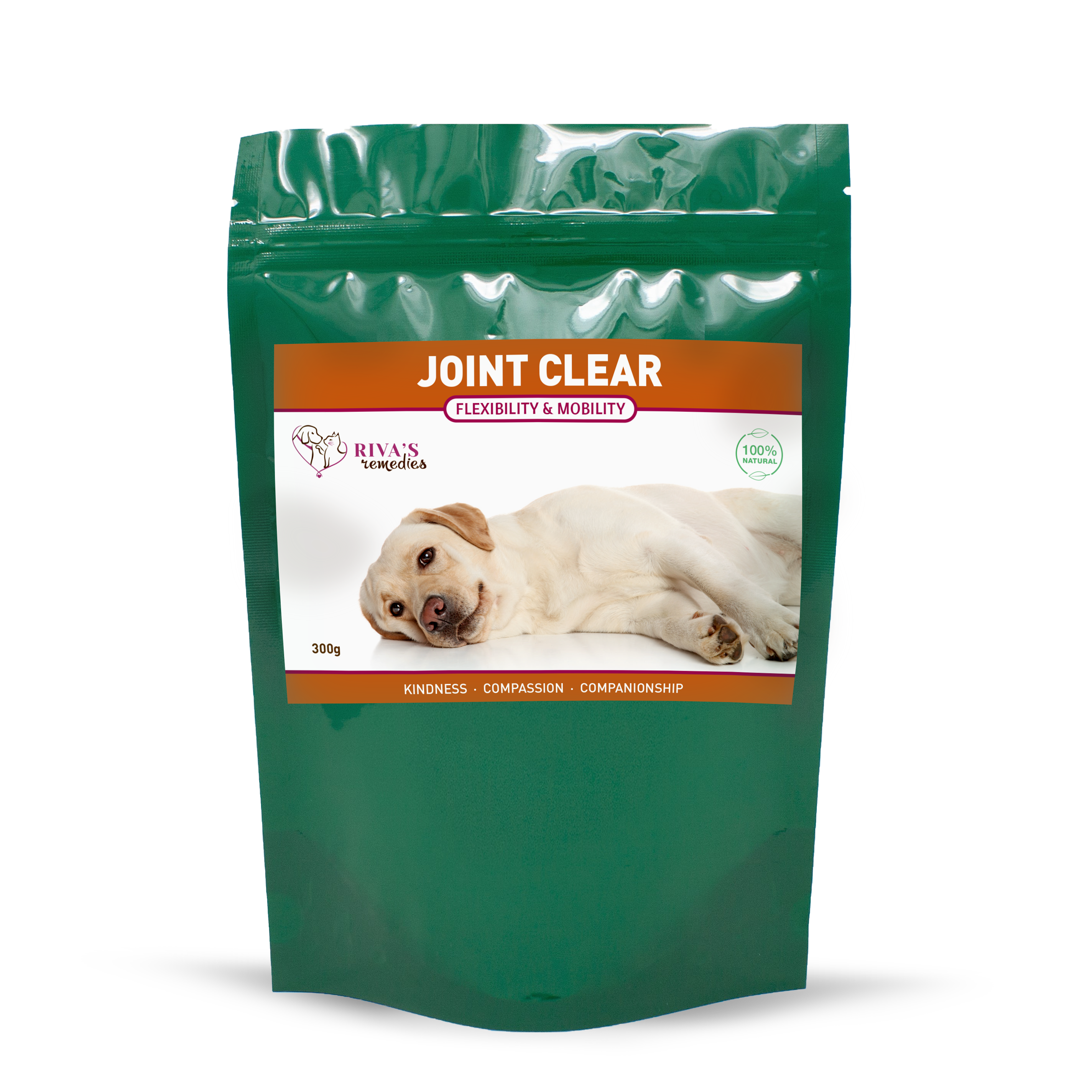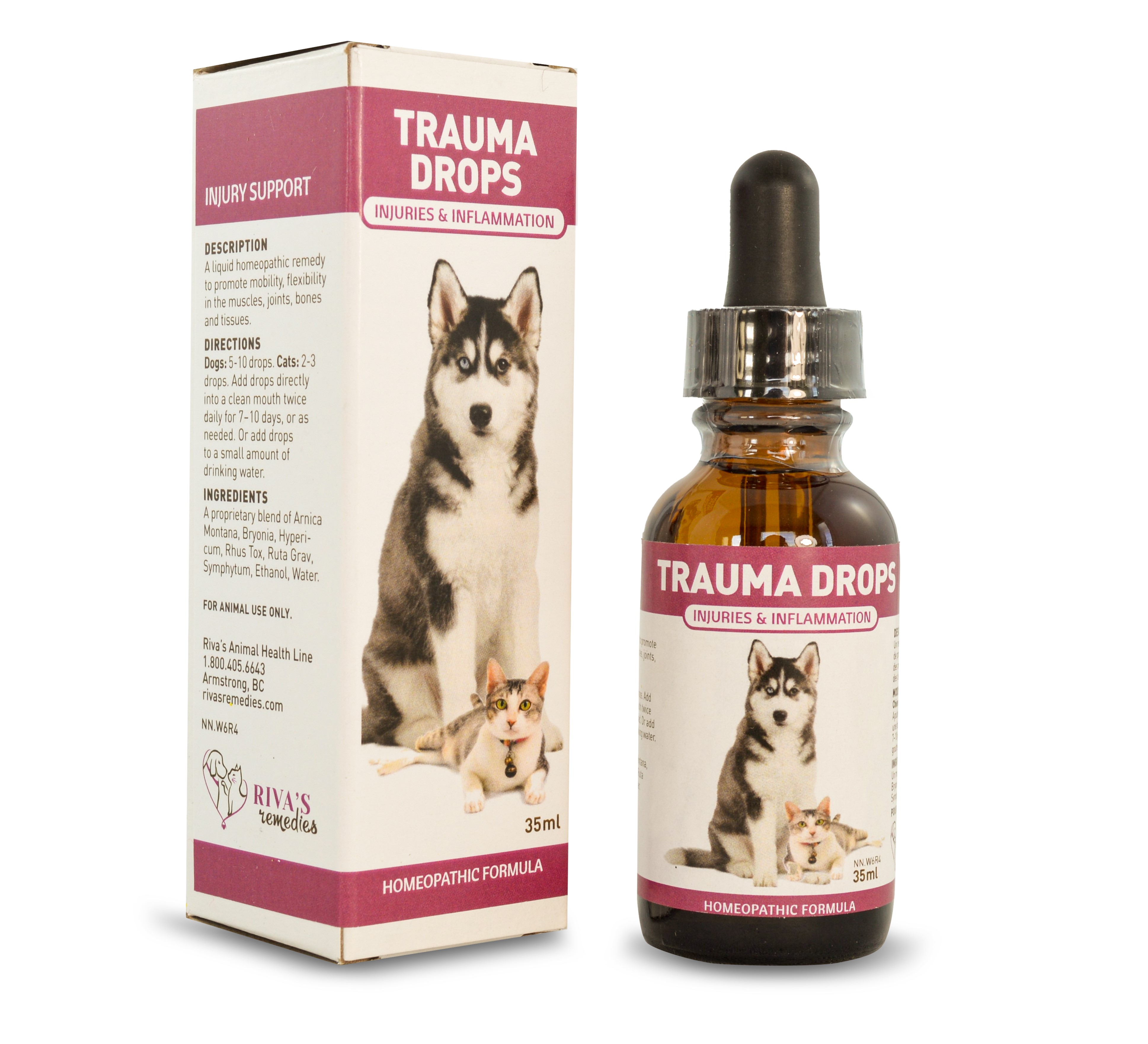Dogs Have So Many Bones!
Bones and joints are an important part of the canine anatomy that are involved in numerous functions. And since dogs have SO many bones there are a lot of different parts of the body that can give a dog grief. In fact, dogs have more bones than humans! Or horses! Dogs have approximately 320 bones in total no matter what size or breed they are. Humans have 206 and horses have 205. Cats have 244.
Why do dogs have so many bones? Because this unique bone structure enables them to run at shockingly fast speeds, roll, play, jump, chase, swim, hunt, and bounce with extreme flexibility. In fact, they don’t have a collarbone and have loosely connected shoulder bones to allow them a greater range of motion when running.
What is Bone?
Bone is a specialized form of connective tissue which is a living, growing tissue just like all other tissues in the body. Bone is constantly being renewed where old bone is removed, and new bone is laid down. This process is known as bone remodeling and it strengthens bone, increases bone density, and allows for the repair of micro-fractures. Before new bone can form, cells called osteoclasts dissolve the tissue on the bone’s surface creating a small cavity. Bone cells called osteoblasts then fill the cavities with collagen. Collagen is a major component of all connective tissue and is a type of protein that builds skin, nails, tendons, and ligaments. And it strengthens bone and cartilage. The collagen is the softer part of the bone and is encased by the harder calcium.
Collagen combines with specific minerals enabling the bone to store these same minerals until they are released back into the blood when the rest of the body’s tissues need them. The bones themselves also use these minerals for nutrition to support remodeling as well as other functions. Aside from the collagen, bones are primarily made from phosphorus and calcium, but other trace minerals are very important too. These include zinc, silica, boron, sulphur, manganese, and vanadium.
Collagen is renewed and rebuilt on a regular basis, but levels are adversely affected by aging, free radicals, injuries, environment and dietary toxins, poor nutrition, and poor immunity.
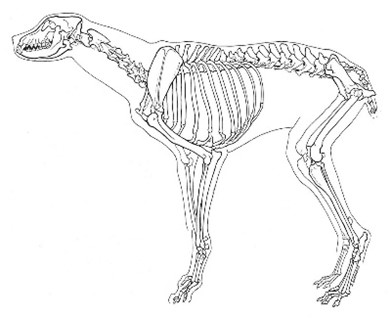
What Do Our Dogs' Bones Do?
Bones are a rigid structure which provides a framework for the muscles to attach and pull on the bones like levers creating movement. Bones support the body’s posture, permit movement, and protect vital organs. They store and regulate minerals, and more recent research has revealed that osteocalcin, a hormone secreted by the osteoblasts, is also involved in sugar metabolism.
The bones also house bone marrow which is the spongy tissue in the centre of the bones. Bone marrow produces both red blood cells and white blood cells including lymphocytes. Bones, therefore, play an important role in the body’s immune system. Another reason why a dog’s bones need to be healthy.
What Are Canine Joints?
Joints are formed where the bone ends come together and are the reason that the skeleton can bend at critical junctions. The ends of the bones are covered with cartilage which is a type of firm connective tissue but is softer and more flexible than bone. Cartilage coats the surfaces to protect the bone and cushion the impact or shock of movement. This also serves to lessen friction as the bones glide over each other. Cartilage tissue contains a high number of nerve endings which are very sensitive to stress or change.
The bone ends are held together by ligaments which connect bone to bone. Tendons, on the other hand, connect bone to muscle. The type of joint determines the degree and direction of motion. For example, the ball and socket hip joints allow rotation, and the hinged knees allow bending and straightening. And some joints such as the plates in the skull are fixed and do not move at all.
Joints are enclosed in a joint capsule which produces fluid. Joint fluid is thick and viscous so that it is able to lubricate the joints.
What Can Go Wrong with Dogs and their Joints?
When a dog skeleton is healthy, bone formation and bone re-sorption occur at equal rates. However, when the rate of re-sorption exceeds the rate of formation, bone density and quality of bone decreases, and the bone becomes very porous and weakens. This condition is called osteoporosis and can lead to increased risk of fractures or other injuries. Osteopenia refers to the loss of bone density due to mineral deficiencies or poor mineral metabolism.
Healthy joints with healthy cartilage and ample joint fluid allow for flexible, pain-free movement. If bones hurt or joint mobility is restricted due to pain and inflammation dogs cannot maintain an active lifestyle. Not only does this create increased stress levels but often results in weight gain which causes other health problems including more joint pain which causes more weight gain!
Common causes of chronic inflammation include old injuries, osteoarthritis including hip dysplasia, panosteitis, and cruciate ligament injuries.

Osteoarthritis in Dogs
is also known as degenerative joint disease. It is the most common form of arthritis and the leading cause of pain in all breeds of dogs. It happens when the top layer of cartilage between two bone ends deteriorates from wear and tear. If the cartilage wears away completely, the bones will rub together resulting in pain and swelling and eventually loss of motion. If bits of bone or cartilage break off, they can float inside the joint fluid causing more discomfort. Bone spurs may form by accumulating calcium deposits on the edges of the joints. Spurs are a defense mechanism to protect the weakened joints and help to prevent friction.
Symptoms of osteoarthritis include stiffness, difficulty in rising or standing, trouble walking or running, reluctance to exercise, and sometimes swollen joints. Osteoarthritis frequently occurs from sloping backs and lower hindquarters. This is often seen in German Shepherds since their abnormal stance is still popular in the show ring. However, any breeds with long backs will have more issues with arthritis including Dachshunds, French Bulldogs, Basset Hounds, Corgis, or Shih-tzus.
Hip Dysplasia in Dogs
This condition describes osteoarthritic wear and tear in the ball and socket hip joints. It is more common in heavier muscled dogs due to genetics, e.g., Rottweilers, Great Danes, St. Bernard’s, Bull mastiffs, Labrador Retrievers, and Malamutes. In fact, any dogs that have been bred to grow abnormally large or too fast will put them at risk for bone and joint problems. Newfoundlands, Wolfhounds, and Leonbergers are also on the list. Hip dysplasia has also been associated with premature neutering before 5 months of age since reproductive hormones play a critical role in the closure of bone growth plates.
Hypertrophic Osteodystrophy (HOD) in Dogs
This is a developmental disease of young, rapidly growing large- and giant-breed dogs. Dogs with HOD exhibit lameness in one or more limbs in association with swelling and inflammation of the metaphyseal regions of long bones. The canine skeleton takes between 3 and 18 months to mature. Smaller breeds mature faster, and larger breeds mature slower. However, if the required minerals or vitamins are not available in adequate amounts bones and joint may not develop correctly or cause pain and inflammation similar to growing pains. In certain breeds, particularly Weimaraner dogs, HOD has been associated with the modified live distemper vaccine since HOD symptoms can present immediately after the vaccine is administered.
Panosteitis in Dogs
Is a condition that describes inflammation of the surface (periosteum) of the long bones of the legs in young and fast-growing large dogs. It is sometimes referred to as growing pains. It may shift from one area to another and tends to have a sudden onset without an injury or trauma. The pains usually resolve on their own after the first two years but can be addressed much sooner with diet and supplements.
Cruciate Ligament Injuries in Dogs
These injuries may not be considered a bone or cartilage issue but nevertheless these ligaments that stabilize the knee joint are very prone to tearing because of joint stress. It can happen suddenly, or the condition can degenerate over time. However, even sudden injuries mean that the knee joint was in trouble long before the event. The pain from an acute injury will subside over a few days but in a chronic injury new bone will start to form to help stabilize the damaged knee joint. Again, large breeds are more at risk especially in their later years and those dogs who were neutered before two years of age.
So, What Causes Joint Damage in Dogs?
Unfortunately, conventional thinking considers osteoarthritis a disease that is a consequence of aging and has no cure. But neither pain relieving medications nor nutraceuticals have offered solid solutions.
In truth, the primary cause of the degeneration of cartilage is the destructive effects of high acid levels, as caused by diet and metabolic waste products, in combination with mineral deficiencies. These acids will increase the re-sorption process and impede remodeling, causing damage to bones and joints as well as teeth. The only reason that we see more osteoarthritis in older dogs is because the acids have had more years to do their destructive work and the metabolic rate drops with age, so they are unable to detoxify the acids and debris as quickly or as effectively, so they are more likely to accumulate. However, younger dogs can suffer acidic conditions as well.
Excess acid also affects the integrity of important minerals. Calcium and phosphorus form a mineral complex known as hydroxyapatite which gives teeth and bones a tremendous amount of strength. However, when hydroxyapatite is combined with water and acids, it forms crystals of hydroxyapatite instead. These crystals then deposit themselves in and around the joints causing inflammation and pain which eventually leads to arthritis and other degenerative bone diseases.
High acid conditions affect bone density and strength because the bones are forced to give up calcium – which is alkaline – to buffer the acidic blood conditions. As well, long-term inflammation from acids or toxins increases cortisol levels. Cortisol is an adrenal stress hormone that is catabolic, meaning that it causes damage and degeneration to bone and many other tissues.
Other factors that negatively affect the remodeling process are lack of exercise, obesity, nutrient deficiencies, and injuries. Therefore, we have a lot of options available to help resolve bone and joint problems through diet, exercise, and the right supplements.
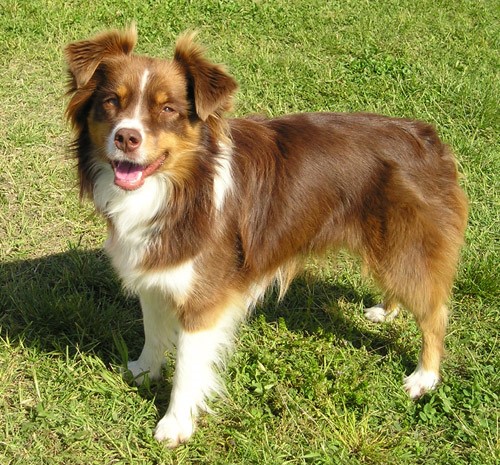 Lifestyle Changes for Dogs – How to Make It Right
Lifestyle Changes for Dogs – How to Make It Right
1. Reduce meat especially red meat including beef, bison, elk, moose, and venison. Red meat is high in arachidonic acid which corrodes bone tissue, causes inflammation, and can leach calcium from the bones resulting in damage, weakness, and inflammation. This is a particular problem for senior dogs who have a slower metabolic rate and cannot detoxify acids and toxins as easily as younger dogs. Red meat is also more difficult to digest.
Older dogs with sore hips or a weak hind end frequently enjoy major improvements just by eliminating red meat. But the acids in red meat can also interfere with normal bone development in young dogs, especially the large breeds who are so prone to bone problems already. Contrary to popular thought, wolves eat very little red meat and they certainly don’t eat any meat as often as their domestic cousins. For more information on the wolf’s lifestyle vs the domestic dogs’ lifestyle, see Chapter 1 “Are We Feeding Dogs or Wolves?” in Healing Dogs Their Way.
2. Reduce salt. Salt is known to cause excessive calcium excretion through the kidneys and is linked to osteoporosis, i.e., bone thinning. Thin bones are more prone to fractures. And since the primary source of salt for dogs is meat, it is prudent to reduce meat consumption particularly in senior dogs. Add more white fish, salmon, and eggs to the diet instead of beef, pork, and poultry.
3. Increase vegetable intake including calcium-rich greens such as kale, broccoli, or spinach. Vegetables are a rich source of nutrients including fibre, vitamins, and minerals.
4. Exercise. Many dogs spend too much time on the couch. Dogs need plenty of free movement and exercise no matter how big or little they are! Walking around a small yard is not adequate. Let them run, play, and chase on a very regular basis.
5. Weight loss. Overweight dogs have a lot more stress and strain on all of their joints. The best strategy for weight loss is the reduction of meat combined with exercise. Many pet parents have tried grain-free diets for weight loss, but this often causes dogs to gain weight, rather than lose weight. There are a lot of calories in meat. Feed more white fish, salmon, and eggs.
6. Avoid the long-term use of non-steroidal anti-inflammatories (NSAIDS) since these medications delay the healing of injuries. NSAIDS may also cause problems with digestion and intestinal health.
7. Use caution with products containing glucosamine, especially for dogs who are overweight, Insulin Resistant, or have Cushing’s. Glucosamine is a concentrated sugar which can exacerbate diabetes, increase weight gain, cause liver issues, and affect the heart.
8. Use caution with vaccinating and early neutering since both of these traditional practices have been linked to various health problems including joint diseases.
Important Joint Supplements for Dogs
Using the right supplements and remedies can go a long way in addressing the underlying cause(s) of bone and joint pain. They help to buffer acids, reduce inflammation, promote flexibility, and improve mobility. Here are our top recommendations and those that are most popular with our dog loving customers.
|
|
Bone-Up (calcium
citrate combined with vitamin B6)
Maintains normal bone, joint, and cartilage function. Helps to buffer excess acids. Promotes strength and flexibility. Anti-arthritic. Supports normal bone development in large breed, fast-growing puppies. |
|
Joint-Clear Herbal Blend (A proprietary blend of Burdock Root, Celery Seed, Rose Hips, and Yucca Root.) Herbal anti-inflammatory. Promotes detoxification and comfort for dogs who are sore and stiff. Supports adrenal function, resilience, and mobility. |
|
Trauma drops, homeopathic (Trauma Drops) (A proprietary blend of
Arnica Montana, Bryonia, Hypericum, Rhus Tox, Ruta grav, and Symphytum)
Homeopathic relief for injuries, joint stress, muscle pain, sprains, strains, and swellings. |
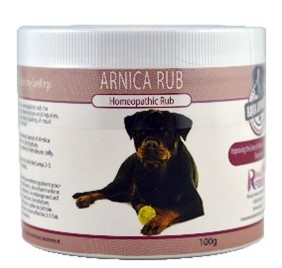
|
Arnica Rub,
homeopathic
For those dogs who like to be massaged and rubbed this is a homeopathic liniment containing Arnica, Hypericum, and Symphytum. |
Check out our Joint Product Package Special to save!

Read Marijke's book
Healing Dog's Their Way for more information and extensive information on diet, nutrition, and natural health programs for all health conditions and diseases
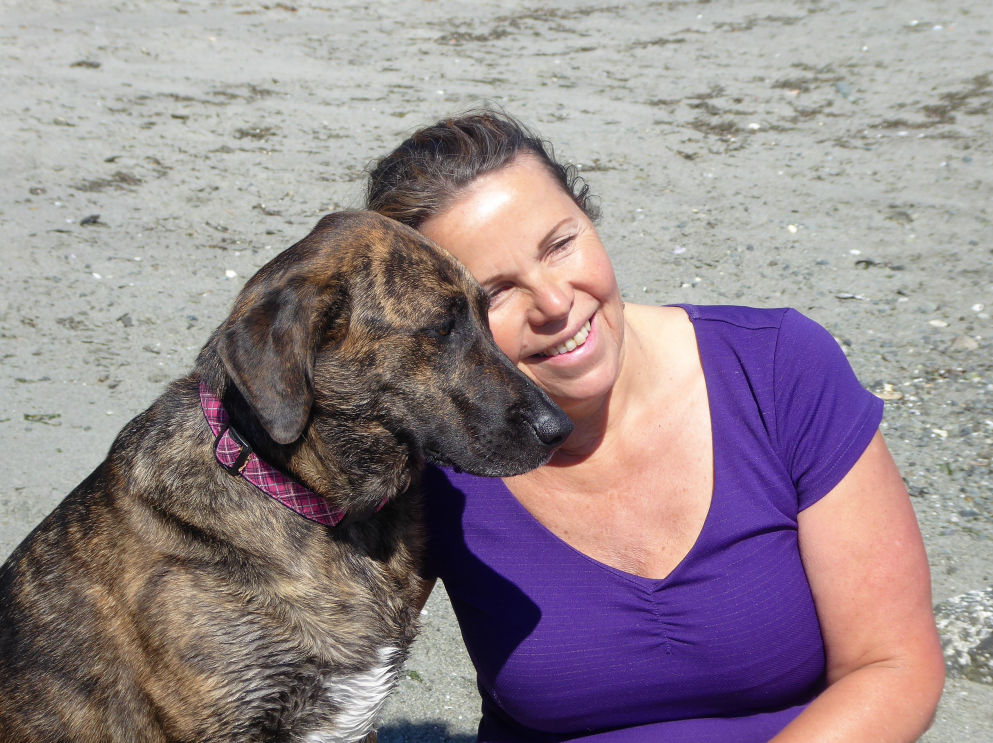
Marijke van de Water, B.Sc., DHMS Animal Health & Nutrition Specialist
Homeopathic Practitioner
Medical Intuitive & Healer
Educator & Author
Marijke is a life-long animal lover, the author of Healing Dogs Their Way , and the founder, formulator, and CEO of Riva’s Remedies. She is a gifted healer who has helped thousands of animals live happier, healthier lives



